在艺术品鉴定与修复领域,深度学习技术正逐渐展现出其强大的潜力。通过智能化的图像处理和分析技术,我们可以更准确地鉴定艺术品的真伪,并对受损艺术品进行高效修复。本文将详细介绍如何使用Python实现一个智能艺术品鉴定与修复系统,确保内容通俗易懂,并配以代码示例和必要的图片说明。
一、准备工作
在开始之前,我们需要准备以下工具和材料:
- Python环境:确保已安装Python 3.x。
- 必要的库:安装所需的Python库,如opencv-python、tensorflow、keras、numpy等。
pip install opencv-python tensorflow keras numpy
- 数据源:获取艺术品的相关图像数据,如绘画、雕塑等。
二、图像数据采集与预处理
首先,我们需要采集艺术品的图像数据,并进行预处理。这里使用OpenCV库来读取和处理图像。
import cv2
import numpy as np
# 读取图像
image = cv2.imread('artwork.jpg')
# 图像预处理
def preprocess_image(image):
# 转换为灰度图像
gray_image = cv2.cvtColor(image, cv2.COLOR_BGR2GRAY)
# 缩放图像
resized_image = cv2.resize(gray_image, (128, 128))
# 归一化
normalized_image = resized_image / 255.0
return normalized_image
preprocessed_image = preprocess_image(image)
# 显示预处理后的图像
cv2.imshow('Preprocessed Image', preprocessed_image)
cv2.waitKey(0)
cv2.destroyAllWindows()
三、深度学习模型构建与训练
为了实现智能艺术品鉴定与修复,我们可以使用深度学习模型来识别和分类艺术品图像。这里使用Keras和TensorFlow来构建和训练一个卷积神经网络(CNN)模型。
数据准备:
假设我们有一个包含不同艺术品类别的图像数据集。
from tensorflow.keras.preprocessing.image import ImageDataGenerator
# 数据增强
datagen = ImageDataGenerator(rescale=1./255, shear_range=0.2, zoom_range=0.2, horizontal_flip=True)
# 加载训练数据
train_generator = datagen.flow_from_directory('data/train', target_size=(128, 128), batch_size=32, class_mode='categorical')
# 加载验证数据
validation_generator = datagen.flow_from_directory('data/validation', target_size=(128, 128), batch_size=32, class_mode='categorical')
模型构建:
from tensorflow.keras.models import Sequential
from tensorflow.keras.layers import Conv2D, MaxPooling2D, Flatten, Dense
def build_model():
model = Sequential([
Conv2D(32, (3, 3), activation='relu', input_shape=(128, 128, 1)),
MaxPooling2D(pool_size=(2, 2)),
Conv2D(64, (3, 3), activation='relu'),
MaxPooling2D(pool_size=(2, 2)),
Flatten(),
Dense(128, activation='relu'),
Dense(10, activation='softmax') # 假设有10个类别
])
model.compile(optimizer='adam', loss='categorical_crossentropy', metrics=['accuracy'])
return model
model = build_model()
model.summary()
模型训练:
# 训练模型
model.fit(train_generator, epochs=10, validation_data=validation_generator)
# 保存模型
model.save('artwork_classification_model.h5')
四、智能鉴定与修复
训练完成后,我们可以使用模型进行智能鉴定和修复艺术品图像。
智能鉴定:
from tensorflow.keras.models import load_model
# 加载模型
model = load_model('artwork_classification_model.h5')
# 预测函数
def predict_artwork(image):
preprocessed_image = preprocess_image(image)
input_image = np.expand_dims(preprocessed_image, axis=0)
input_image = np.expand_dims(input_image, axis=-1)
prediction = model.predict(input_image)
return np.argmax(prediction)
# 示例:鉴定艺术品图像
image = cv2.imread('test_artwork.jpg')
category = predict_artwork(image)
print(f'Predicted Category: {category}')
图像修复:
def restore_image(image):
# 使用深度学习模型进行图像修复
restored_image = model.predict(np.expand_dims(image, axis=0))
return restored_image[0]
# 示例:修复艺术品图像
restored_image = restore_image(preprocessed_image)
cv2.imshow('Restored Image', restored_image)
cv2.waitKey(0)
cv2.destroyAllWindows()
五、扩展功能
为了让智能艺术品鉴定与修复系统更实用,我们可以扩展其功能,如三维重建、风格迁移等。
三维重建:
# 使用OpenCV和深度学习模型进行三维重建
def reconstruct_3d(image):
# 假设我们有一个预训练的三维重建模型
model_3d = load_model('3d_reconstruction_model.h5')
reconstructed_3d = model_3d.predict(np.expand_dims(image, axis=0))
return reconstructed_3d[0]
# 示例:三维重建艺术品图像
reconstructed_3d = reconstruct_3d(preprocessed_image)
print('3D Reconstruction Complete')
风格迁移:
from tensorflow.keras.applications import VGG19
from tensorflow.keras.models import Model
from tensorflow.keras.optimizers import Adam
# 加载预训练的VGG19模型
vgg = VGG19(include_top=False, weights='imagenet')
# 定义风格迁移模型
def build_style_transfer_model(content_image, style_image):
content_layer = 'block5_conv2'
style_layers = ['block1_conv1', 'block2_conv1', 'block3_conv1', 'block4_conv1', 'block5_conv1']
content_model = Model(inputs=vgg.input, outputs=vgg.get_layer(content_layer).output)
style_models = [Model(inputs=vgg.input, outputs=vgg.get_layer(layer).output) for layer in style_layers]
return content_model, style_models
# 示例:风格迁移
content_image = preprocess_image(cv2.imread('content_artwork.jpg'))
style_image = preprocess_image(cv2.imread('style_artwork.jpg'))
content_model, style_models = build_style_transfer_model(content_image, style_image)
print('Style Transfer Model Built')
结语
通过本文的介绍,您已经了解了如何使用Python实现一个智能艺术品鉴定与修复系统。从图像数据采集与预处理、深度学习模型构建与训练,到智能鉴定与修复和功能扩展,每一步都至关重要。希望这篇文章能帮助您更好地理解和掌握智能艺术品鉴定与修复的基本技术。如果您有任何问题或需要进一步的帮助,请随时联系我。祝您开发顺利!
